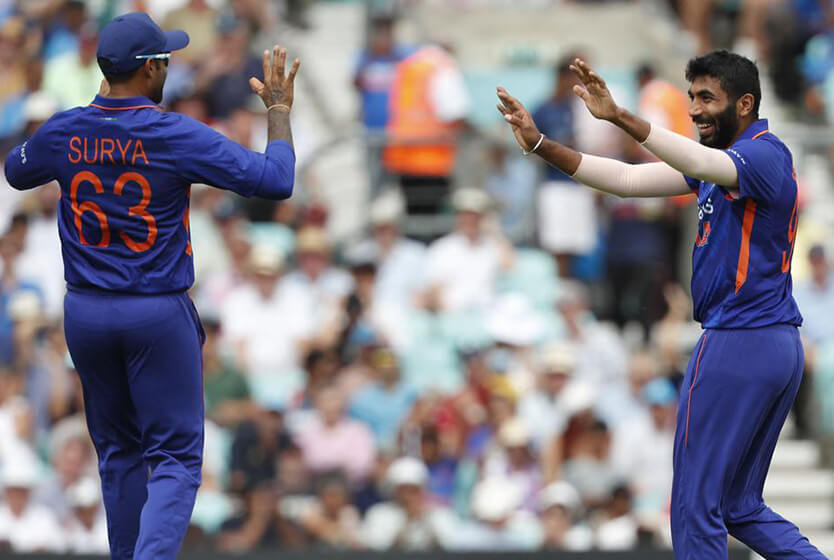
Pakistani T20 Batting Options
Taking Stock of Pakistan’s T20 Batting Options
Pakistan’s T20 History
Up until 2012, Pakistan had always at least reached the semifinal stages of the T20 World Cup. Till 2012, no team had won more T20 World Cup matches than Pakistan (18). It has been said that Pakistani players took to T20 cricket like a fish to water because this was how they grew up playing their cricket in the streets and the maidans. They, effectively, had a head start on the world; however, if you don’t continue running in the race, you will be eventually be overtaken.
In 2014, that’s just what happened. They were knocked out of the tournament by the quintessential team, the West Indies. It was a defeat that should have rung alarm bells, but Pakistan’s T20 team remained static while the world’s teams and players started to take T20 seriously.
In a period of the first T20 specialists, Pakistan continued to view T20 cricket as a shorter version of ODIs, selecting batsmen according to runs and their ability to bat 20 overs, expecting the bowlers to bail them out every time.
This all came to a head at the 2016 T20 World Cup, where Pakistan was humiliated. They played three games against top teams and were woefully outclassed in all three games. The advent of the PSL couldn’t have come at a better time.
And yet, Pakistan was still hindered by their home base. Most PSL and Pakistan T20 matches were played on the UAE’s tired pitches, where T20 batting is different from anywhere else in the world.
Average First Innings score in the UAE: 147
Average First Innings score in the ROW: 157
It may only be ten runs, but those ten runs represent what Pakistan was missing out on by playing in the UAE. Pakistan had gone from having a head start to a handicap.
2020 may go down in history books as one of the worst years in human history, but it was a watershed moment for Pakistan cricket. It was the year cricket empathetically came home. Already you can see the shift; PSL went from being the worst competition for batting to one of the best. It is only in these conditions that Pakistani batsmen can evolve to fit modern T20 batting standards. Some already have; some are showing promising signs, while others have remained static.
Openers
PSL 2020 and National T20 Cup 2020 saw a total of 15 local openers score 100+ runs. Babar Azam, unsurprisingly, has the most runs by an opener (748) despite missing the first half of the NT20 Cup. He is followed closely by Fakhar Zaman with 708 runs. Surprisingly, Babar’s strike rate (SR) of 133.6 is actually greater than that of Fakhar’s (131.3) and therein may lie the problem.
Pakistan’s T20 side revolves around Babar batting through the innings. The opener who has to bat with him has to take advantage of the powerplay; he has to be one that can get going from ball one. This is where overall strike rate can be a deceiving metric as some openers start slowly but make up for it later on when they bat through the innings; case in point – Imam-ul-Haq.
Imam actually has the 2nd best SR for an opener (140) across the two competitions, but the way he has gotten his runs makes him a non-starter in the national T20 team as long as Babar is there. Imam’s starting SR, i.e., his SR in his first 10 balls, is a lowly 88.
Kamran Akmal has the highest SR for an opener (147) in Pakistan domestic cricket this year, but his powers seem to be on the wane after a disappointing NT20 and with more than 20% runs this year coming in one innings.
And thus, we are compelled to move further down the SR list. Khurram Manzoor and Awais Zia, in addition to being on the wrong side of 30, have less than ideal starting SRs (101 and 91 respectively). Moving on, we finally come to the two young openers who are touring New Zealand – Zeeshan Malik and Abdullah Shafique.
Both are not yet the complete product. While Zeeshan’s starting SR (124) is better than that of his contemporaries, his Set SR, i.e., SR after 10 balls, is 145, which is below the NT20 average of around 155. It is an area of his game he has to improve. Abdullah Shafique, interestingly, has the opposite problem. The powerplay often rewards those batsmen who play proper cricketing shots; once you pierce the infield, a boundary is highly likely. Perhaps this is why Abdullah’s starting SR sits at an impressive 140. However, when the field is pushed back, and the spinners come on, he struggles to maintain this rate of scoring. His set SR is a disappointing 130.
Sharjeel Khan has been touted by many as the solution to Pakistan’s opening conundrum. Still, only at one point in the entire year has he shown any indication of being the powerplay monster he once was against the tournament’s weakest bowling attack. On the contrary, during the NT20, his starting SR (90) was among the worst in the competition.
The fact of the matter is that from a numbers standpoint, Fakhar Zaman may still be Pakistan’s best bet for a T20I opener with the ideal SR break up (125-167), but he has been averaging ten in the past two years in T20Is, and that may tempt the management to let Zeeshan or Abdullah learn on the job.
There is one other option – Push Haider Ali up to opener from No.3. His SR break up (162-179) is that of an elite T20 batsman, but obviously, he hasn’t done it while opening the batting. The management will have to decide if they are willing to risk Haider’s power against spin in the middle overs (SR 182).
Upper Middle Order
The 7-12 over period in T20s is where there is a lull in proceedings. Batsmen are trying to consolidate, and the bowling team is trying to get through their fourth and fifth bowlers’ overs. Good batting sides don’t allow this to happen by sending in aggressive batsmen who go after these bowlers, creating chaos among the ranks of the bowling side. The captain is forced to bring back his better bowlers to stop the charge and use up overs that he may have been saving for the death. This forces him to bowl his lesser bowlers at the death when the batting team’s hitters are set.
According to the PSL and the NT20, three batsmen in Pakistan can do this job – Haider Ali (162-179), Shadab Khan (149-173), and Sohaib Maqsood (157-183). These batsmen usually bat at #3 or #4 and thus come in the 7-12 over period, but they attack instead of consolidating.
Currently, Pakistan has Mohammad Hafeez batting at #4, with a starting SR of 108. In T20s this year, Hafeez has an SR of 92 in the first 10 overs and an SR of 167 in the last 10. It seems he subscribes to the antiquated philosophy of consolidating in the middle overs. So, you can make an argument to drop him down to #5 to ensure that he comes in after the first ten overs are up. Hence, Pakistan can have that set SR of 183 without the downside of him starting slowly because he has time to waste.
Lower Middle Order
The 13-16 over period is where teams would ideally like to send in their hitters (batting 5-7) to get set before exploding at the death. They would still need to maintain a respectable rate while getting set, say perhaps 8 RPO, i.e., an SR of 133. When they would get set, one could expect them to strike at 180+.
Once again, Pakistan isn’t really spoilt for choice. Only three lower-order batsmen fit this criterion – Khushdil Shah, Iftikhar Ahmed, and Danish Aziz.
Khushdil might be the best of the lot. In the NT20 Cup, he started at 135, but when set, he struck at 228. The sample size for Danish Aziz is small, but there are promising signs. His starting SR is a low 110 only because of one innings where he was initially on 2 off 10 balls due to his team collapsing to 45/7. If we were to remove that outlier, his SR jumps back up to the standard 135. Iftikhar Ahmed in the NT20 started at 131, and his set SR was the 2nd highest of the competition (200). You can understand why Khushdil (more destructive) and Danish (age) could be preferred over him. Still, he’s a useful squad option to have, especially with his off-spin complementing Imad Wasim’s SLA.
Pakistan’s T20 batting options are limited, but they are not non-existent. There is enough batting talent there to fill one national team squad.







Leave a Reply